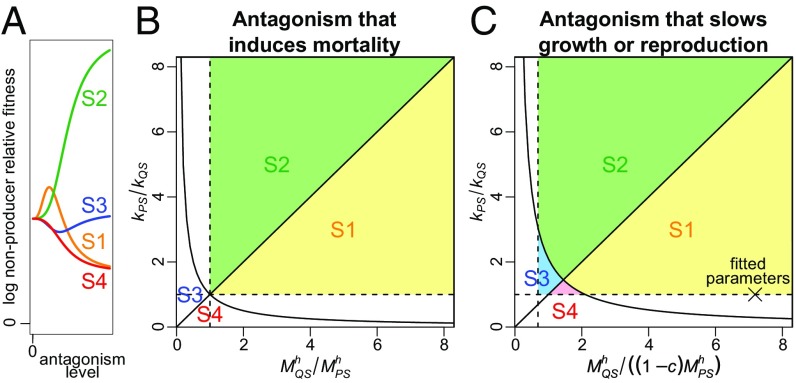Fig. 2.
Results of a general mathematical model. (A) The level of an ecological antagonism and the relative fitness of public goods nonproducers can be related in four qualitatively different ways: S1, S2, S3, or S4. (B) For an antagonism that induces mortality, the form of the relationship depends on kPS/kQS (the ratio of the effects of the antagonism on producers and nonproducers, respectively, as the antagonism level approaches infinity) and MQS/MPS (the ratio of the antagonism levels at which the antagonism effect is half its maximum for nonproducers and producers, respectively) raised to the power of h (a constant, typically between 1 and 10). (C) For an antagonism that slows growth or reproduction, the class of the relationship also depends on the cost of public goods production, c. Boundaries defining the parameter regions of S1–S4 are shown as solid lines. Assuming the antagonism affects producers at least as much as nonproducers excludes the unshaded regions of the parameter space below and to the left of the dashed lines in each panel. Thus, for an antagonism that induces mortality, only relationships S1 and S2 are possible, whereas for an antagonism that slows growth or reproduction when c > 0, all four classes of relationship are possible (in the figure we set c = 0.31, which is the estimate obtained from our data). Our experimental system lies within the S1 region, as indicated by the cross labeled “fitted parameters.”

